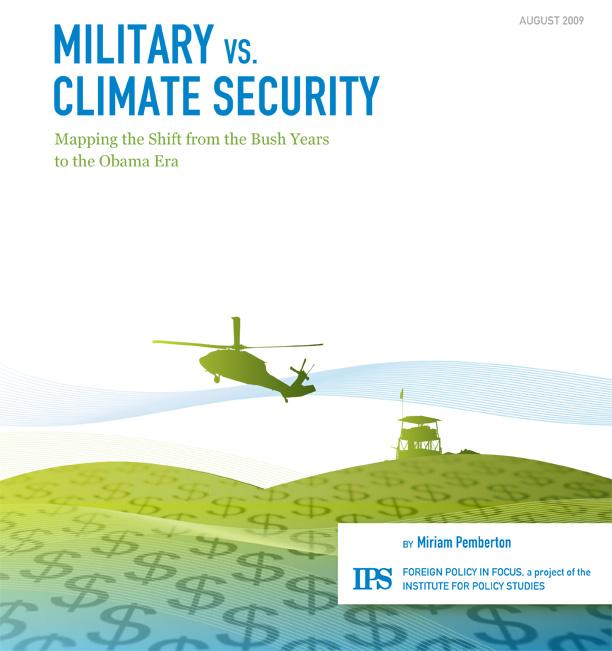 In addition to creating an existential threat to the planet and its people, rapidly accelerating climate change is a security challenge. The U.S. military now views the massive disruptions that will result, in the absence of concerted global action, as a major likely precipitant of increased violent conflict around the world.
In addition to creating an existential threat to the planet and its people, rapidly accelerating climate change is a security challenge. The U.S. military now views the massive disruptions that will result, in the absence of concerted global action, as a major likely precipitant of increased violent conflict around the world.
Yet U.S. security spending has been overwhelmingly concentrated on the tools of military force. The precursor to this paper, “The Budgets Compared: Military vs. Climate Security” (Institute for Policy Studies, January 20081), found that for FY 2008, the Bush administration allocated $88 federal dollars to military forces for every dollar it devoted to stabilizing the climate.
The public interest would be served by closing the enormous gap between federal expenditures on military as opposed to climate security. The grounds for this are:
- It will make the balance of our security resources more consistent with the relative magnitudes of the threats faced by the nation and the world.
- In a time of rising unemployment, this shift will create more jobs than the current balance of spending on military and climate security.
- It will redirect the jobs base toward work the country needs doing.
This report evaluates the progress of the Obama administration in narrowing this gap. The government’s most important tool for reducing greenhouse gas emissions is to set limits on them; Congress is currently working on a framework to do so. The focus here is the second-most important tool, namely investment.
Since there is not yet government data that isolates all spending directly related to the mission of reducing greenhouse gas emissions, we have produced a preliminary estimate of this spending.